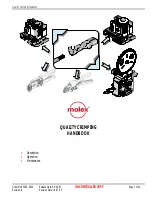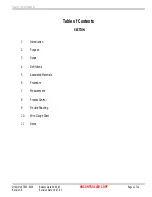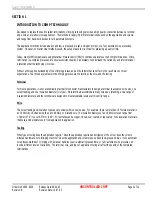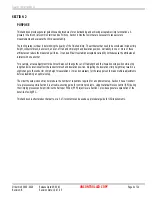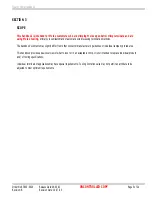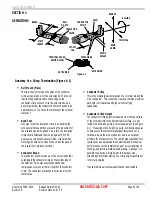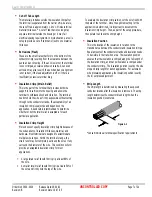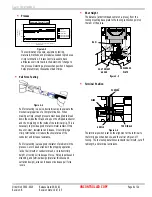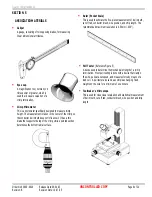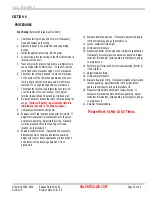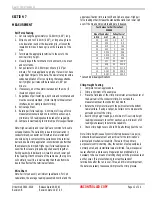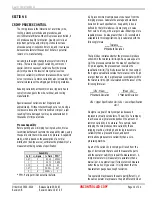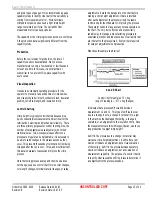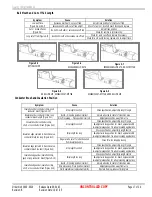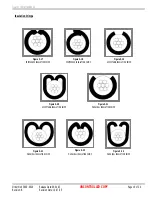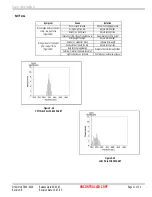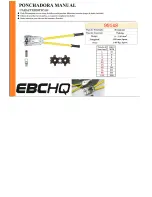
Quality Crimp Handbook
Order No 63800-0029
Release Date:09-04-03
UNCONTROLLED COPY
Page 6 of 24
Revision: B
Revision Date: 10-07-05
INSULATION
CRIMP
BRUSH
STRIP
LENGTH
BELL
MOUTH
CRIMP
HEIGHT
CONDUCTOR
CRIMP
CUT-OFF
TAB
SEAM
EXTRUSIONS
EXTRUSION
EXTRUSION
TERMINAL CROSS-
SECTION VIEW
Figure 4-1
BEND
DOWN
BEND UP
ROLLING
TWISTING
SECTION 4
DEFINITIONS
Anatomy of a Crimp Termination (Figure 4-1)
§
Bell Mouth (Flare)
The flare that is formed on the edge of the conductor
crimp acts as a funnel for the wire strands. This funnel
reduces the possibility that a sharp edge on the
conductor crimp will cut or nick the wire strands. As a
general guideline, the conductor bell mouth needs to be
approximately 1 to 2 times the thickness of the terminal
material. *
§
Bend Test
One way to test the insulation crimp is by bending the
wire several times and then evaluating the movement of
the insulation and wire strands. As a rule, the insulation
crimp should withstand the wire being bent 60 to 90
degrees in any direction, several times. Use care when
working with small wire sizes so the wire at the back of
the insulation crimp does not shear.
§
Conductor Brush
The conductor brush is made up of the wire strands that
extend past the conductor crimp on the contact side of
the terminal. This helps ensure that mechanical
compression occurs over the full length of the conductor
crimp. The conductor brush should not extend into the
contact area.
§
Conductor Crimp
This is the metallurgical compression of a terminal around the
wire's conductor. This connection creates a common electrical
path with low resistance and high current carrying
capabilities.
§
Conductor Crimp Height
The conductor crimp height is measured from the top surface
of the formed crimp to the bottom radial surface. Do not
include the extrusion points in this measurement, (See Figure
4-1). Measuring crimp height is a quick, non-destructive way
to help ensure the correct metallurgical compression of a
terminal around the wire's conductor and is an excellent
attribute for process control. The crimp height specification is
typically set as a balance between electrical and mechanical
performance over the complete range of wire stranding and
coatings, and terminal materials and plating. Although it is
possible to optimize a crimp height to individual wire
stranding and terminal plating, one crimp height specification
is normally created.
*Consult individual terminal specification requirements


